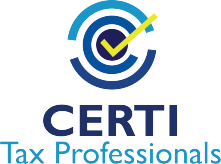How to manually calculate CPP contribution
The basic exemption for CPP contribution is $3500. In other words, the first $3500 income is exempt from CPP premiums. The question is, how do we prorate this $3500 exemption over the year. Here is an excerpt from CRA website. How to manually calculate the amount of CPP contributions you have to pay As an employer, you have to pay the same amount as your employee. Multiply the result of step 4 by 2. Example Joseph receives a weekly salary of $500 and $50 in taxable benefits. Calculate the amount of CPP contributions that you have to pay. Step 1: Calculate the basic pay-period exemption $3,500 ÷ 52 = $67.30 (do not round off) Step 2: Calculate the total pensionable income $500 + $50 = $550 Step 3: Deduct the basic pay-period exemption from the total pensionable income $550 – $67.30 = $482.70 Step 4: Calculate the amount of CPP contributions $482.70 × 4.95% = $23.89 Step 5: Calculate the…
